Use the following list of pros and cons to sort through the options for making the best beds on your dairy.
Organic bedding options
Compost bedding/bedded pack
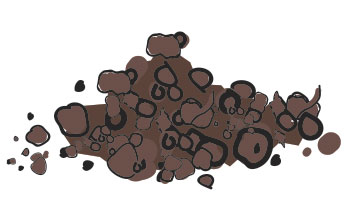
Approximately 12 to 18 inches of composting material (wood shavings or sawdust) is initially spread on the floor of a bedded pack or compost barn. The bed pack must be aerated twice daily during milking to a depth of up to 8 to 10 inches; this incorporates oxygen for aerobic decomposition and to provide a fresh surface without accumulated manure for cows to lie down.
Commonly, a semi truck of fresh, dry sawdust is added every two to five weeks depending on season, weather conditions and cow density. The pack can rise as much as 4 feet and is removed once or twice a year. When the bedded pack is cleaned out entirely, the soiled bedding is spread on fields according to farm manure management plans.
This system requires excellent pack and ventilation management for barns to perform well. Many bedded-pack barns have fans to blow air downward onto the bedded pack to help dry the pack surface. When we see steam rising from the pack during aerating, moisture is escaping in large amounts.
Bedded-pack barns, in general, have higher concentrations of environmental pathogens. To reduce the risk of mastitis in cows, farms need to maintain adequate bedding, ensure frequent grooming, provide excellent ventilation, avoid overcrowding and practice good parlor hygiene and corral grooming.
Pros:
- Manure is readily available; the cost is low and absorbency is high.
- Despite the high bacterial count of the bedding material, udder health and milk quality were not compromised, and somatic cell count (SCC) decreased over time in a well-managed bedded-pack barn. However, good parlor management is needed for this to occur.
- Herd turnover rates have been shown to decrease over time, most likely due to reduced incidence of lameness and hock lesions. Bedded-pack barns are very comfortable to cows, and foot and leg health has been shown to be positive using this bedding system.
- Bedded-pack barns allow cows the freedom of movement compared to freestalls and tiestalls.
- There is a reduction in manure storage costs and needed space and a savings in labor and manure handling.
- Compost bedding shows lower incidence of first and second mastitis cases, lower SCC and higher milk yield when used during the dry period.
Cons:
- High ambient humidity and air temperatures are not conducive to effective use of dried manure solids or composted dairy waste as bedding material.
- Dried manure is an excellent medium for bacterial growth once moist; composting offers little benefit toward net reduction in teat-end contamination of pathogens. Each 1 percent increase in the percent of cows with milk discarded was associated with a 0.14 percent increase in bulk milk somatic cell scores.
- The number of gram-negative bacteria in deep-bedded manure solids was greater compared to short-bedded manure solids.
Mattresses
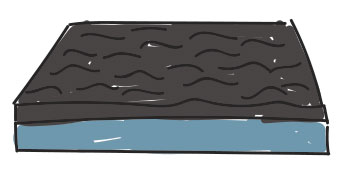
Mattress are mainly used in tiestalls or freestall barns. There is a waterproof exterior filled with a variety of materials such as rubber crumbs or foam. Mattresses are marketed as needing no bedding, but research has shown bedding makes the mattresses more attractive to cows, and the Dairy Stewardship program requires bedding on mattresses.
Cows prefer soft rubber mats to conventional hard rubber mats or concrete when bedding is added with at least 1 pound of straw over the top. With mattresses, it is recommended to bed daily rather than alternate-day bedding to control bacteria on the surface because organic bedding is commonly used on top of mattresses.
Pros:
- Cows stalled on mattresses tend to be cleaner.
- SCC of cows is typically lower with mattresses.
- Cows prefer to stand on mattresses, especially lame cows – which indicates a cow’s preference for cushioned surfaces.
- Mattresses bedded with lime have the lowest counts of environmental pathogens.
Cons:
- Cows on foam mattresses need more time to lie down, and lying duration is shorter.
- Swollen and injured hock scores tend to be higher when compared to other bedding materials.
- Mattresses used as a stall base decreased lying comfort and have been implicated as risk factors for lameness.
Paper
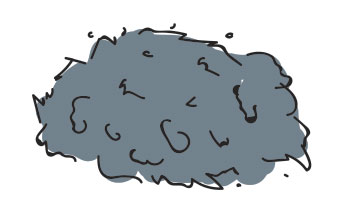
Paper is relatively inexpensive if close to paper mills. Chopped recycled newspaper may be used also and may be mixed with other bedding materials. Fineness of chop will influence bedding characteristics. Additionally, it is important to utilize recycled paper with minimal glossy and high-ink residue.
Sawdust or wood shavings
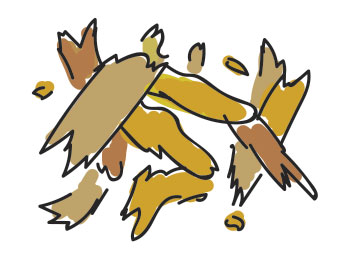
Pros:
- Sawdust and wood shavings can be broken down by micro-organisms in the disposal facility.
- Cows have been observed to have more lying time with deep-bedded sawdust.
- Lameness issues have been shown to decrease when using sawdust or wood shavings.
- Sawdust and wood shavings are high in absorbency.
- Ease of use is one of the primary reasons for this choice on many dairy farms.
- Adding lime to bedding to reduce pH may reduce pathogen growth; however, the effect of lime is short-lived (24 hours), and lime should be added daily. It is recommended to add lime before bedding stalls, and mixing just prior to use is most effective to reduce pathogen counts.
Cons:
- Because they are organic, sawdust and wood shavings allow for rapid growth of pathogens.
- Smaller particle size of sawdust has rapid growth of pathogens and higher bacteria counts. Small particle size of sawdust makes it more absorbent than wood shavings and quicker to break down.
Straw and hay
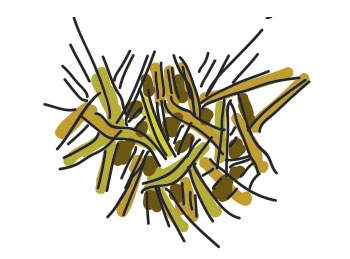
Straw, an organic material, is often used for bedding because it is soft, provides thermal insulation and composts well. Straw and hay are attractive bedding options when produced on the farm. A small particle size (3/4-inch screen) increases animal comfort and absorbency and shortens breakdown time of straw.
Pros:
- Lying duration is longer on straw compared to many other bedding options. Cows have been observed to lie down more on concrete with large amounts of straw over the top than on lightly bedded soft rubber mattresses.
- Bacterial counts of straw have shown to be lower compared to sand and sawdust.
- Straw and hay can be grown on the farm.
- Cows prefer to lie on concrete stalls with lots of straw compared to soft rubber mats with a small amount of straw.
Cons:
- Cows lying on straw and hay are dirtier than cows lying on other bedding surfaces.
- Decreased cleanliness of cows is linked to higher incidences of mastitis.
- Hoof health is lower compared to cows housed on sand.
- Straw is often avoided due to difficulty of handling, cost and compatibility with manure systems.
Inorganic bedding
Sand
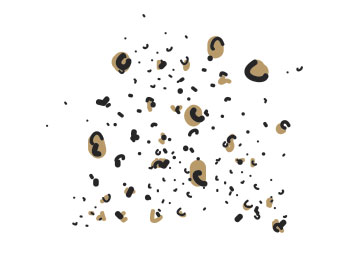
Sand is economical, improves cleanliness of cows and has advantages for leg and hoof health. It is an inert material that doesn’t promote pathogen growth; however, when mixed with manure, pathogen growth may occur. Sand that is naturally occurring has rounded edges and is more comfortable for cows.
Particle size is important, as sand too small in particle size will hold water well, and large particle size is not comfortable for cows to lie on. Very fine sand provides less drainage because the fine sand fills voids between larger particles and allows pooling or pockets of moisture. A depth of 6 to 8 inches in a freestall is recommended for cow comfort, softness and molding.
Pros:
- Sand has shown to reduce prevalence of lameness in cows.
- Clean sand can be reused.
- Lying time of cows increases with sand.
- Environmental bacteria counts are lower with sand compared to organic bedding options.
- Cleanliness of cows, cow health with low environmental bacteria, reduced occurrences of hock lesions and claw diseases, and surface traction are the main reasons farmers choose to use sand.
- Sand acts as a cleaning agent to remove manure from legs, udder and flanks.
- Pathogen quantities increase and peak one day after placement of clean and recycled sand.
Cons:
- Disposal can be a challenge. Often sand does not work with manure systems. In a liquid manure-handling facility, sand must be settled to the bottom and then disposed.
- Stalls may become compacted, and sand will be difficult to separate from manure by passive or mechanical methods.
- Sand is difficult to use with slatted floors.
- When stalls with sand become concave, total lying time of cows decreases. Regular maintenance of stalls is needed to avoid this.
- When given a choice of bedding options between sand, straw and mattresses, sand is the least preferred method among cows.
When considering the best bedding choice for a dairy operation, weigh out these pros and cons, and determine which satisfies both cow comfort and farm management needs. ![]()

-
Kim Clark
- Dairy Extension Educator
- University of Nebraska – Lincoln
- Email Kim Clark







